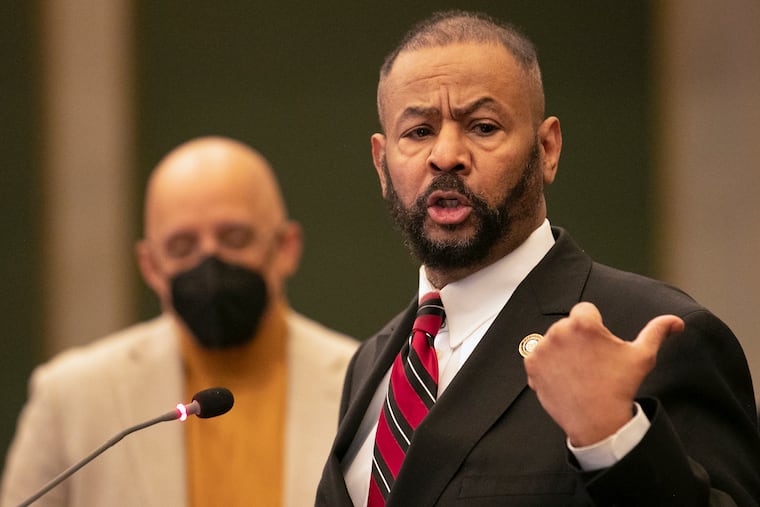Philly officials managed to collaborate on gun violence report, but can they implement their own recommendations? | Editorial
A report may have underscored the need for more philosophical alignment on questions of how the law should be enforced and how crime should be prosecuted.

Gun violence is not relenting in Philadelphia, but the city is armed with a new tool at its disposal: a nearly 200-page report providing rigorous analysis on the circumstances surrounding about 2,000 shootings. An 18-month collaborative project, spearheaded by City Councilmember Curtis Jones Jr., the report provides a detailed analysis of gun violence trends designed to provide a framework for crafting solutions driven by research and data.
It’s easy to dismiss a report as an unimportant step to solving a problem as painful and urgent as gun violence. But if it can put Philadelphia on track toward a more comprehensive approach, rooted in data and aimed at those most at risk to shoot or be shot, it can usher a new era of effective gun violence prevention. That is both a possibility and a prayer.
Last week, officials from the Police Department, the District Attorney’s Office, members of City Council, and others presented the report, titled the “100 Shooting Review,” and praised not only its level of detail but the collaborative nature in its production — the type of collaboration that Philadelphia needs on many issues but sees only rarely.
The report also included 35 recommendations. These include: creating a special police unit to investigate nonfatal shootings, providing more resources to support witnesses to crime who are testifying in court, and prioritizing responses to the 311 city services telephone hotline when those calls are made from long-neglected neighborhoods.
» READ MORE: A Philly committee spent 18 months examining the city’s gun violence crisis. Here’s what it found.
Implementing any of these recommendations could prove difficult. Can Philadelphia expand foot patrols in an effective way when there are persistently high rates of absenteeism among police officers — some of whom are out for long periods of time because they were deemed too injured to even work a desk job but are still collecting taxpayer-provided paychecks as they opened businesses and ran marathons?
Other recommendations, such as investing “resources in neighborhoods where chronic disinvestment has crippled community supports, health, and public safety,” could prove challenging to fulfill at the kind of scale and pace that’s needed in the largest poor city in America.
Challenging as they may be, these types of recommendations can be Philadelphia’s north star — and well worth the effort. If officer absenteeism prevents the city from pursuing policing practices that are evidence-based, it’s all the more reason for the city to aggressively lobby Harrisburg to reform Act 111 that governs arbitration with police unions. If funding is the missing piece, all the more reason to work hard in 2022 to elect a U.S. senator from Pennsylvania who will be the tie-breaking vote on legislation that will bring money into Philadelphia.
The authors of the report make clear that not all of the recommendations have been endorsed unanimously by all the parties involved in the collaboration.
One sticking issue among two collaborators is the role of gun possession cases in reducing gun violence. The Police Department, under the leadership of Commissioner Danielle Outlaw, has made arrests and convictions for illegal gun possession a point of emphasis. District Attorney Larry Krasner, on the other hand, wants a more intensive focus on solving homicides and shootings and less emphasis on arrests for possession. Krasner argues that there is no evidence that more arrests and convictions for gun crimes leads to lower crime rates and calls many Philadelphians arrested for gun possession “basically law-abiding people who have not obtained a license.”
One thing is clear: There is no point in the Philadelphia Police Department investing resources in gun cases that the District Attorney’s Office is not interested in pursuing, or that prosecutors are unable to win convictions for in court because witnesses don’t show up (as the report suggests). The entirety of the criminal justice system should move in unison. Hopefully, the new nonfatal shooting unit and collaborative reviews with the District Attorney’s Office could be the beginning of a new relationship with the two agencies seeing more eye to eye.
Jones, and all parties related to this report, deserve immense credit for showing what the foundation of evidence-based policymaking should look like. But now the real test begins: Can the collaboration persist beyond the writing of a report and extend into the implementation of recommendations that would save lives?